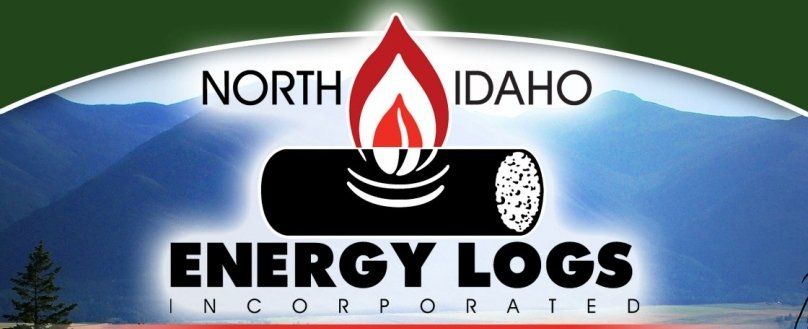Product Facts
What are some of the benefits of using North Idaho Energy Logs and Pellets?
- NO DIRT, to get on the floors and rugs
- VIRTUALLY NO SMOKE, to discolor drapes
- NO SOOT OR TAR, to clog the heating unit
- NO SPARKS, to pop out on the floor or rugs
- NO ODOR, to make their use unpleasant
- NO PITCH, to get on hands or clothes
- VIRTUALLY NO ASH, less than 1/2 of 1%
- LONG BURNING, with steady and intense heat
- FULL COMBUSTION, no clinkers, no waste
Energy Logs have been tested extensively against other manufactured wood heating logs. The 8 lb. Energy Log can not be compared one on one with the competition since many other logs are lighter, at 5-6 lbs. Our tests have been done by weight. Pound for pound, the Energy Log burned twice as long as other manufactured logs. The log comparison tests were done in both a conventional uncertified wood stove and a phase 2 certified wood stove. Energy Logs consistently out performed other manufactured logs. The high density and low moisture content of the Energy Log enables it to pack 8,600 BTU's per pound. Amazingly, one 8 lb. Energy Log contains 68,000 BTU's and one unit of 240 Energy Logs are a compact bundle of energy just waiting to happen! Pound for pound it's awful hard to beat the price and efficiency of Energy Logs.
Product Uses
Use Energy Logs and Pellets in a variety of places, such as:
Wood Stoves - "Energy Logs" produce a very intense heat and it is not necessary to burn more than one log to hold a good fire. In fact a portion of a log burns efficiently all by itself, and by proper control of dampers will last for a long period. There is absolutely no waste or unnecessary fire, but when lots of heat is needed it's there. "Energy Logs" are clean to handle, no dirt, practically no smoke, no odor, only 3/10 of 1% ash and they will win out in competition with every other type of heater fuel.
Furnaces - In furnaces, with a simple installation of grate plates or come to cut down draft, "Energy Logs" compare very favorably with coal. They are far preferable from the standpoint of cleanliness, absence of ash and smoke, and relief from greasy soot and dirt. A cellar as clean as a kitchen is possible when using "Energy Logs". They can also be stored in the kitchen, pantry or hall.
Fireplaces - "Energy Logs" are long-lasting. Just two placed in the fireplace will last for a period of 4 to 5 hours, burning with a beautiful, steady flame and providing wonderful heat. They will not pop or throw sparks, so a fire screen (which destroys much of the heating value of a fireplace) is entirely unnecessary. "Energy Logs" are by far the finest and most attractive fuel obtainable.
Cook Stoves - For cooking service "Energy Logs" are also unequalled. They provide constant uniform heat. It is easy to learn the exact part of an "Energy Log" necessary to cook the particular meal. You can depend upon getting the same result each time and can thereby eliminate all waste. Many people find that one third of an "Energy Log" will cook an ordinary meal.
Camping - Throughout the west "Energy Logs" are being taken along on camping, fishing and beach trips. They provide dry fuel for cooking and heating.
Product History
In 1925, J.P. Weyerhaeuser, Jr., then serving as manager of the Clearwater Timber Company, came to Lewiston, Idaho and opened an office taking with him G. F. Jewett and C. L. Billings.
Construction of the plant, which stands on the site of the former Lewiston fair grounds, was started in February of 1926 and the first sawlog went through the mill on August 8, 1927.
In 1930 Robert T. Bowling, still employed as an engineer with Potlatch Forest Industries developed Pres-to-Logs and Pres-to-Log stoker fuel at the Clearwater unit - the first major step in more complete utilization of the harvested tree through use of waste material. The fuel is manufactured from dry shavings from the planer mill by subjecting them to compression and intense heat. From this development came Wood Briquettes, Inc., organized in 1933 for the purpose of leasing machines for manufacture of the fuel.
Today, the product from these same machines are known as Energy Logs. The trade name Pres-to-Logs was bought by a company making a different type of log with different type of machinery



